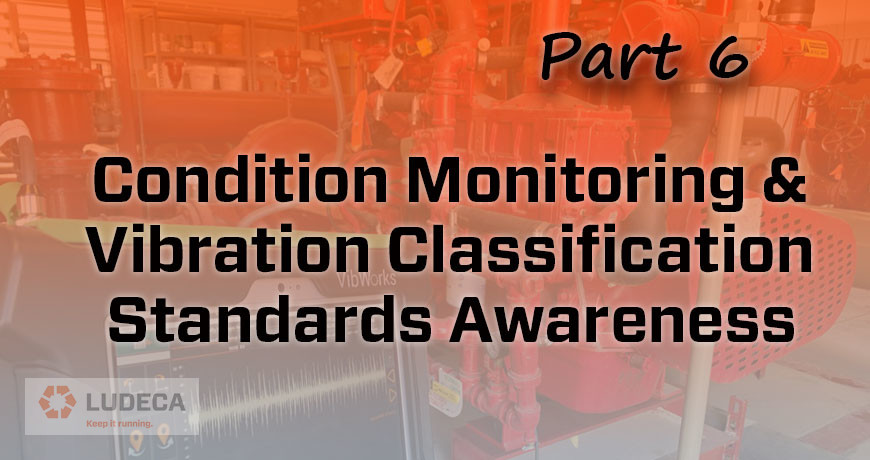
Disclaimer: The author is not trying to present himself as an authority on all available CM standards. This blog post is simply an attempt to help those who may be unaware that such guidance exists or of the extent of such standards.
We previously discussed a series of international standards pertaining to condition monitoring of industrial equipment with vibration analysis in, Condition Monitoring & Vibration Classification Standards Awareness: Part 5 ISO 20816-5:2018 This is number 6 in a series of blogs describing a certain family of international standards mainly intended to help determine general machine condition, primarily from machine casing vibration levels (with a few exceptions where shaft vibration is also considered).
The standard focused on in this blog concerns itself with characterizing the condition of rotodynamic pumps starting at just above 1 horsepower. Read the scope (quoted below) carefully, as with all the standards. This standard has application to both acceptance testing and in-service condition monitoring.
This standard, unlike the dash 3 (-3) standard, suggests alarm limits without regard to where the machine is operating in relation to a critical speed. It does, however, class pumps into criticality groups, in order to give users flexibility with their alarm sets.
This standard is titled:
ISO 10816-7:2009
Mechanical vibration — Evaluation of machine vibration by measurements on non-rotating parts
Part 7: Rotodynamic pumps for industrial applications, including measurements on rotating shafts
The scope of this standard is quoted below from the ISO.org preview page (quotation in bold):
Scope:
This part of ISO 10816 gives instructions for the evaluation of vibration on rotodynamic pumps for industrial applications with nominal power above 1 kW. It defines the special requirements for the evaluation of vibration when the vibration measurements are made on non-rotating parts (bearing housing vibration). It provides specific guidance for assessing the severity of vibration measured on bearing housings of rotodynamic pumps in situ and for the acceptance test at the manufacturer’s test facility or in the plant. This part of ISO 10816 also gives general information and guidelines for assessing the relative shaft vibration of the rotating shaft.
This part of ISO 10816 specifies zones and limits for the vibration of horizontal and vertical pumps irrespective of their support flexibility. The general evaluation criteria are valid for operational monitoring of rotodynamic pumps and for acceptance tests1) in situ or at the manufacturer’s test facility if specified. For the acceptance test at the manufacturer’s test facility, special conditions are given.
For monitoring the vibration values during long-term operation, two criteria are provided for assessing the machine vibration. One criterion considers the magnitude of the observed vibration and the second considers changes in magnitude. The evaluation criteria are applicable for the vibration produced by the pump itself and not for vibration which is transmitted to the pump from external sources. The criteria mainly serve to ensure a reliable, safe long-term operation of the pump, simultaneously minimizing harmful effects on connected devices. Additionally, recommendations are given for defining operational limits and setting alarm and trip values.
For pump units with integrated electrical motors (impeller directly on the motor shaft or impeller shaft rigidly connected to the motor shaft), this part of ISO 10816 applies to the whole coupled unit.
For flexibly coupled motors, this part of ISO 10816 is applicable for the pump only. Also, separately mounted drivers are not within the scope of this part of ISO 10816. Those drivers are dealt with in ISO 10816-3.
The following types of pumps are excluded from this part of ISO 10816:
- reciprocating and rotating positive displacement pumps;
- reciprocating engine driven pumps;
- pumps in hydraulic power generating and pumping plants with power above 1 MW (see ISO 7919-5[4] and ISO 10816-5);
- solids handling, slurry, and submersible pumps.
Torsional vibration is not dealt with in this part of ISO 10816.
To read the ISO’s preview of this standard, click here.
Filed under:
Condition Monitoring by Mike Fitch CRL
